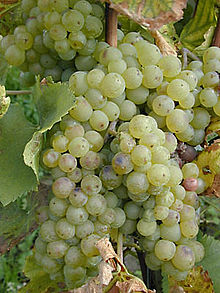When the wine gets older
The wine is very similar to a human being: it is born, grows up, gets older and then vanishes (usually when someone drinks it! That's why a wine doesn't die; exception are the sick destroyed wines.)
Supposing now that you have the wine, after all those adventures I described in another post. First of all, the wine forms itself ; this lasts after the end of the fermentation until the first filtration. Now someone with skills can already feel the wine and all its incipient properties.
After that comes the maturation, made whether in big vessels, or much better and more traditional in oak. Now you got the bouquet, that subtle property of the wine, which is a combination between smell and taste and draws the boundary between an ordinary and a premium wine.
The degradation phase of the wine begins when the wine is at the peak of its properties, and afterwards it starts to lose them. Scientifically and statistically proven, the reds best aging and keeping period lasts between 8 and 20 years; sometimes even more (e.g. Cabernet). For the white wine, this period lasts between 4 and 18 years. Some wines, even good wines, are not so happy to celebrate such a long life. You can find in Romania some excellent old wines by the different producers, or from the personal collection of former communist ruler Nicolae Ceausescu.
When you've got the must, the oenology starts. This a science, or an art, or both, and tries to make the perfect wine you are used to drink. It is not easy, it is a very special and noble science, has many secrets and tricks, and requires knowledge and experience. There methods and tricks for accelerating the maturation; there are special methods of preserving the wines. In the start up phase of your vineyard hire a consultant (oenologist) if you have the slightest doubts about the process. It is cheaper than doing some ireversible mistakes!
The basics: don't allow the wine to stay in extreme heat, and don't allow the vessels to be only partial full, due to evaporation and other causes. Further, there are methods of conditioning the wines and methods to avoid the possible diseases of the wines ( most of them produced by fungi or different substances going in some unwanted reactions).
I don't wish to make the wine tasting much more complicated than in the real life, but I only thinked that some knowledge will help you to understand better and faster what happens when you rise and drink a glass of wine, and how many work is hiding behind that glass of wine! But tasting and enjoying the good wines is also a tribute for all these contributors. Now I will make a decision, based on your comments and feedback: whether I will go further and deeper with the technical sophisticated part, or better concentrate on wine tasting and Romania ( as Romania has also some other attractions than wine tours).














